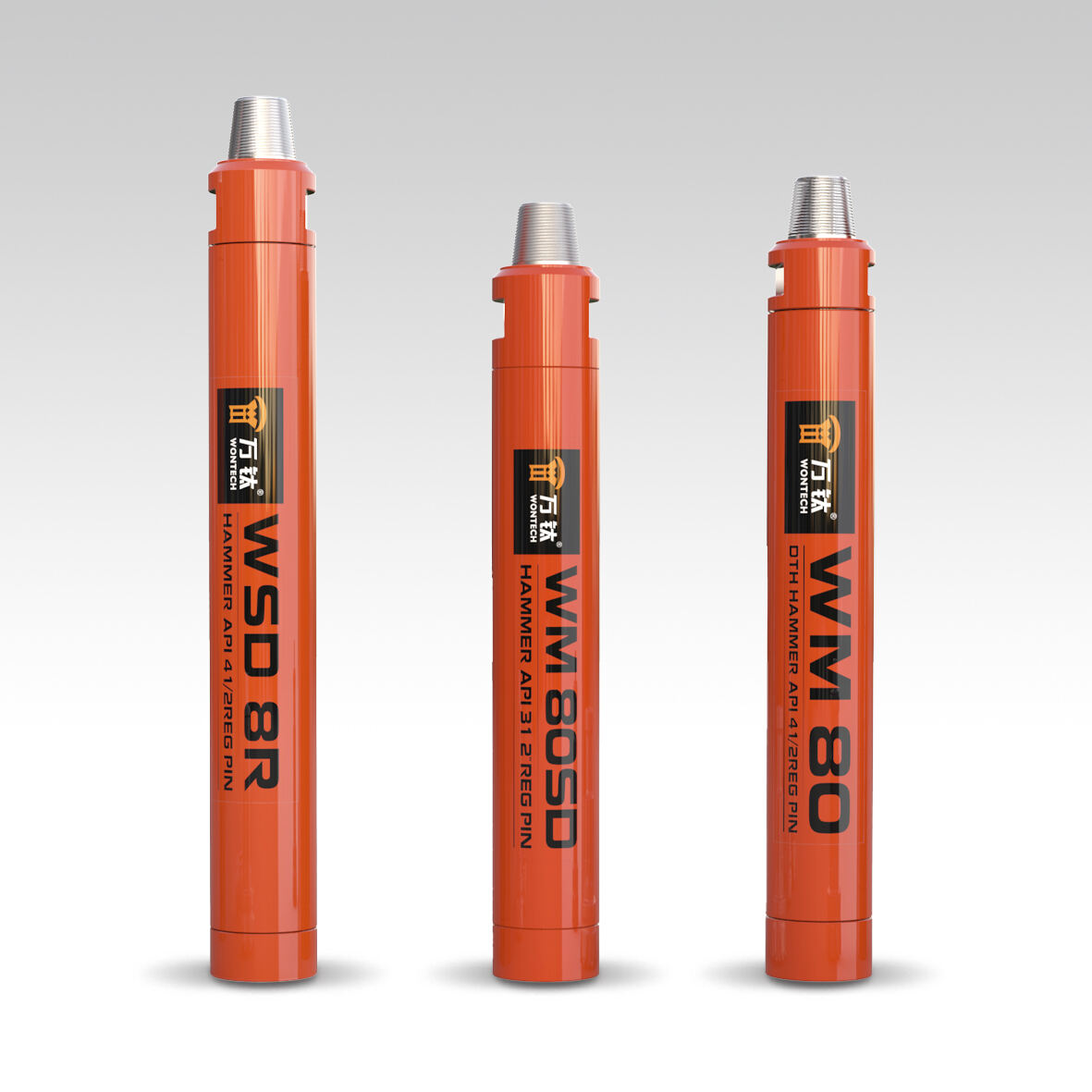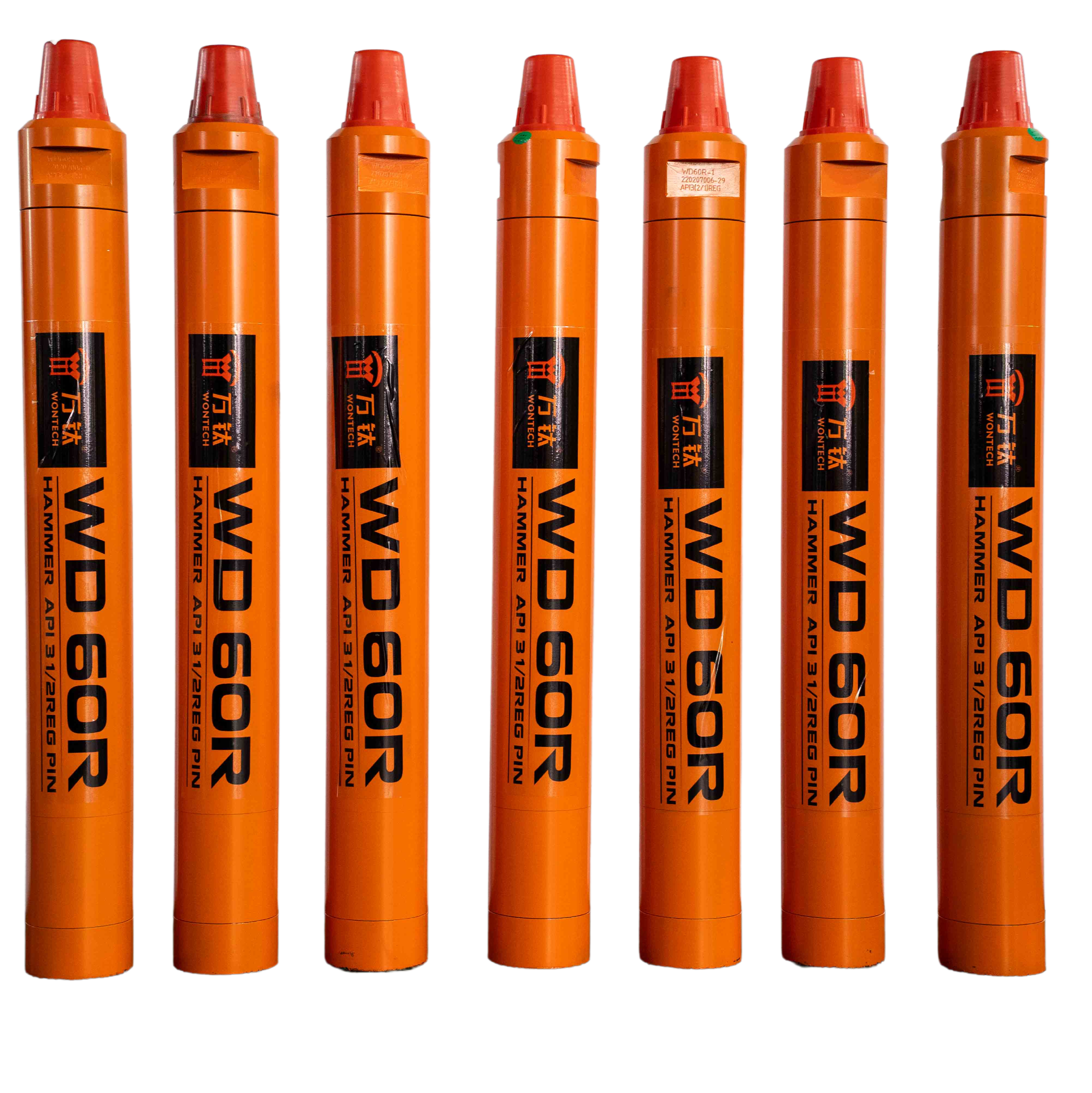Proper maintenance of down-the-hole drilling equipment is crucial for maximizing operational efficiency and equipment longevity. A well-maintained dth hammer can significantly reduce downtime, lower operational costs, and ensure consistent drilling performance across various geological conditions. Understanding the fundamental principles of hammer care enables drilling professionals to achieve optimal results while protecting their substantial equipment investments.

The drilling industry relies heavily on percussion drilling technology, where hammer systems deliver powerful impact forces to penetrate challenging rock formations. Regular maintenance protocols ensure these sophisticated tools maintain their precision engineering tolerances and continue delivering the high-energy impacts necessary for efficient drilling operations. Neglecting proper care procedures can result in premature component failure, reduced penetration rates, and costly equipment replacement.
Preventive Maintenance Fundamentals
Daily Inspection Protocols
Establishing comprehensive daily inspection routines forms the foundation of effective hammer maintenance programs. Before each operational shift, technicians should examine all external components for signs of wear, damage, or contamination. Visual inspections should focus on thread connections, housing integrity, and any visible cracks or deformation that could indicate internal stress or impact damage.
The inspection process should include checking air passage clearances, ensuring proper bit engagement, and verifying that all safety mechanisms function correctly. Documentation of these daily checks creates valuable maintenance records that help identify developing issues before they result in equipment failure. Systematic inspection protocols also help operators recognize normal wear patterns versus abnormal deterioration that requires immediate attention.
Lubrication Management Systems
Proper lubrication represents one of the most critical aspects of hammer maintenance, directly affecting component longevity and operational reliability. High-quality lubricants reduce friction between moving parts, dissipate heat generated during high-impact operations, and provide protective barriers against contamination and corrosion. Selecting appropriate lubricant grades based on operating conditions and manufacturer specifications ensures optimal protection.
Lubrication schedules should account for operational intensity, environmental conditions, and drilling duration. Frequent monitoring of lubricant levels and quality helps prevent catastrophic failures that occur when components operate without adequate protection. Regular lubricant analysis can reveal early indicators of component wear, allowing maintenance teams to schedule repairs during planned downtime rather than experiencing unexpected breakdowns.
Component-Specific Maintenance Procedures
Piston and Cylinder Care
The piston and cylinder assembly represents the heart of any percussion drilling system, requiring meticulous attention to maintain proper clearances and sealing integrity. Regular inspection of these components should focus on wear patterns, surface finish quality, and dimensional accuracy. Even minor deviations from specification can significantly impact hammer performance and energy transfer efficiency.
Cleaning procedures for piston and cylinder assemblies must remove all debris, drilling residue, and contaminated lubricants while avoiding damage to precision-machined surfaces. Specialized cleaning solvents and techniques help maintain the tight tolerances essential for optimal operation. Regular measurement of critical dimensions using precision instruments helps determine when components approach replacement thresholds.
Bit Shank and Connection Maintenance
The bit shank connection transmits tremendous forces during drilling operations, making it particularly susceptible to wear and stress-related damage. Regular inspection should examine thread condition, shank straightness, and any signs of cracking or deformation. Proper thread engagement and torque specifications must be maintained to ensure reliable energy transfer and prevent connection failures.
Connection maintenance includes regular cleaning of thread surfaces, application of appropriate thread compounds, and verification of proper engagement depth. Damaged or worn threads can cause vibration, energy loss, and potential equipment failure. Maintaining detailed records of bit usage and connection cycles helps predict replacement timing and prevent unexpected failures during critical drilling operations.
Advanced Maintenance Techniques
Performance Monitoring and Analysis
Modern maintenance approaches incorporate sophisticated monitoring techniques that track hammer performance parameters in real-time. Vibration analysis, temperature monitoring, and impact frequency measurement provide valuable insights into component condition and operational efficiency. These diagnostic tools help identify developing problems before they result in catastrophic failures or significant performance degradation.
Data collection systems can track penetration rates, air consumption, and energy transfer efficiency to establish baseline performance metrics. Deviations from established parameters often indicate developing maintenance issues that require investigation. Trending analysis helps maintenance teams optimize service intervals and predict component replacement needs more accurately.
Reconditioning and Overhaul Procedures
Comprehensive overhaul procedures extend equipment service life and restore performance to near-original specifications. Professional reconditioning involves complete disassembly, thorough inspection, precision measurement, and replacement of worn components. This process requires specialized tools, technical expertise, and access to genuine replacement parts to ensure proper restoration.
The reconditioning process should follow manufacturer guidelines while incorporating lessons learned from field experience and failure analysis. Quality control measures during reassembly ensure that all components meet specification requirements and that the dth hammer will deliver reliable performance when returned to service. Proper documentation of overhaul procedures creates valuable maintenance history for future reference.
Troubleshooting Common Issues
Performance Degradation Diagnosis
Identifying the root causes of performance degradation requires systematic analysis of operational parameters and component condition. Reduced penetration rates, increased air consumption, and abnormal noise patterns often indicate specific maintenance issues that require targeted intervention. Understanding these symptom patterns helps maintenance teams quickly isolate problems and implement appropriate corrective measures.
Diagnostic procedures should follow logical sequences that eliminate potential causes systematically. Starting with external inspections and progressing to more detailed internal examinations helps identify issues efficiently while minimizing equipment downtime. Proper diagnostic techniques can often identify multiple related problems that should be addressed simultaneously during maintenance activities.
Emergency Repair Strategies
Field conditions sometimes require immediate repairs to maintain operational continuity when complete overhauls are not immediately feasible. Emergency repair strategies should focus on safety, temporary restoration of basic functionality, and prevention of further damage. These procedures require careful assessment of risks and limitations to ensure that temporary fixes do not create additional hazards or compromise long-term reliability.
Emergency repair kits should include essential spare parts, specialized tools, and detailed procedures for common failure modes. Training personnel in emergency repair techniques ensures that qualified individuals can respond quickly to equipment failures. However, emergency repairs should always be followed by proper comprehensive maintenance as soon as operational conditions permit.
Safety Considerations and Best Practices
Personal Protective Equipment Requirements
Maintenance activities involving percussion drilling equipment require comprehensive personal protective equipment to ensure worker safety. High-pressure air systems, heavy components, and hazardous chemicals used in cleaning and lubrication processes create multiple safety risks that must be properly managed. Appropriate PPE selection should consider all potential hazards associated with specific maintenance tasks.
Safety protocols must address proper handling techniques for heavy components, lockout procedures for air systems, and emergency response plans for equipment malfunctions. Regular safety training ensures that maintenance personnel understand proper procedures and recognize potential hazards. Creating a culture of safety awareness helps prevent accidents and ensures that maintenance activities are completed without incident.
Environmental Protection Measures
Responsible maintenance practices include proper handling and disposal of lubricants, cleaning solvents, and worn components to minimize environmental impact. Spill prevention measures, containment systems, and approved disposal methods help protect natural resources while maintaining compliance with environmental regulations. Sustainable maintenance practices contribute to corporate environmental responsibility goals.
Recycling programs for metal components, proper fluid management systems, and environmentally friendly cleaning products help reduce the ecological footprint of maintenance operations. Training maintenance personnel in environmental best practices ensures that these considerations are integrated into daily maintenance routines rather than being treated as separate requirements.
FAQ
How often should a dth hammer undergo complete maintenance
Complete maintenance intervals depend on operating conditions, drilling intensity, and manufacturer recommendations. Typically, comprehensive inspections should occur every 200-300 operating hours, with major overhauls scheduled every 800-1200 hours. However, harsh drilling conditions may require more frequent maintenance to prevent premature failure and maintain optimal performance.
What are the most critical components to monitor during routine maintenance
The piston and cylinder assembly, bit shank connection, and air distribution system require the most attention during routine maintenance. These components experience the highest stress levels and are most susceptible to wear-related failures. Regular monitoring of these areas helps identify developing issues before they result in costly equipment failures or operational disruptions.
Can field maintenance replace professional overhaul services
While field maintenance is essential for daily operation and minor repairs, it cannot completely replace professional overhaul services. Professional facilities have specialized equipment, precision measurement tools, and technical expertise required for complete restoration. Field maintenance should focus on preventive care, routine adjustments, and minor repairs while scheduling comprehensive overhauls at appropriate intervals.
What signs indicate immediate maintenance attention is required
Immediate attention is required when experiencing significant performance degradation, unusual noise patterns, visible damage to components, or air leakage from connections. Any safety-related concerns, such as loose connections or damaged housing, should result in immediate shutdown until proper repairs are completed. Operating equipment with known defects can lead to catastrophic failures and safety hazards.

